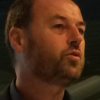-
2 comments
Prof. Mariana Mazzucato's report "Mission-Oriented Research & Innovation in the European Union - A problem-solving approach to fuel innovation-led growth" was published on February 21. It is a stimulating proposal to harness and coordinate European creativity through “missions”, tackling large-scale societal challenges with bold, ambitions approaches towards a clear target, using cross-disciplinary or multi-sectoral research teams with other participants as necessary.
How will FET fit in to this vision? As the report notes, FET Flagships share many features with these proposed missions: they “show a high degree of alignment with EU research and innovation missions.” We could see FET Flagships as the original of the species: science-driven missions, and the newer ones proposed are a variant, more driven by societal challenges. In any case, the visionary, interdisciplinary, and bottom-up approaches proposed have long been features of all parts of the FET programme, including FET-Open and FET-Proactive.
At a recent event at the European Parliament, Jerzy Langer, former chair of the FET Advisory Group, made an impassioned argument in favour of the FET approach to open research, particularly on the key role of people. I believe that this feature of FET – creating research communities, with both the technological capability and the sense of playful adventure to try to attempt the impossible, to do new things in completely new ways – is one of its key strengths. FET projects do not “just” generate results; they create a whole set of communities who, having worked together in interdisciplinary collaboration to create new and amazing things, know how to do that again – and even better.
The recent analysis by FET_Traces on the impact of FET support over 224 FET-Open and FET-Proactive projects supports these claims of novelty, interdisciplinarity, community building and impact. An impressive 83% of the projects addressed “radically new” ideas and 36% of projects had an impact on more than 20 scientific fields. 86% of FET projects stimulated follow-up collaborative projects, suggesting lasting partnerships and communities. The economic impact was also evident: a quarter of FET projects generated at least one patent and 12% led to spin-off companies – a remarkably high figure considering the upstream level of the research and in comparison to other scientific and public research programmes. We hope to build upon these impressive achievements in future research and innovation programmes.
The European Commission is calling for feedback on the Mazzucato report through a survey on this web page until 3 April 2018. I would like to invite you to give feedback and have your say, not only on the proposed approach but also to suggest potential scientific missions. As the survey questions themselves are limited in scope, you can also upload documents there to support your points and position.
For example, we would love to hear your opinion on the usefulness of missions of different sizes: the use of smaller ones (akin to FET-Proactives) as a way to build up interest and capacity towards the really big ones. In this way, Flagships could be seen as a series of missions building upon one another.
One possible issue in mission-driven actions is that they could work against serendipity and risk-taking – in striving so hard to achieve the stated goal, they could miss other unexpected results and potential benefits that could generate a new technology or a new industry. What do you think?
Apart from giving feedback on the Mazzucato report, please also feel free to comment here on Futurium below, as part of this discussion. Those of you with experience of FET will no doubt have particularly useful insights to offer, and we’d love to hear examples.
Thank you for your attention and reading this far!
John



